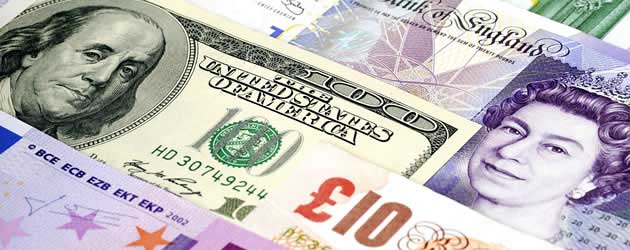
The Pound to US Dollar exchange rate (GBP/USD) grew by around 0.75 cents yesterday as demand for Sterling was enhanced by the latest in a long run of positive UK ecostats.
The Confederation of British Industry (CBI) boosted UK economic prospects by announcing that their index of Retail Sales improved from +27 in August to a fresh 15-month high of +34 in September, beating forecasts of +24. The robust print led to a series of Sterling rallies, which took GBP/USD from just under 1.6000 to 1.6075.
Later on in the day the US Dollar was damaged further by a mixed US Durable Goods Orders report. Although August’s score came in slightly better-than-expected at +0.1%, July’s dreadful -7.3% print was downgraded to -8.1% and this hurt the ‘Greenback’.
Later on today both the UK and the US will be subject to reevaluations of their second quarter GDP figures: the quarterly UK score is predicted to be confirmed at 0.7%, whilst the annualised US figure is expected to tick slightly higher from 2.5% to 2.6%. By and large the dataset is likely to prove fairly neutral unless there are any unexpected deviations.
Nine months into the year and the Pound has almost come full circle against the US Dollar. In January Sterling entered a nauseating free-fall that lasted for three months, taking GBP/USD lower by around 14 cents as a deadly cocktail of market fears drastically deteriorated investors’ demand for the UK currency.
The Pound was significantly impacted by three simple, but effective negative influences: 1) fears that Britain was heading for a triple-dip recession, 2) concerns that the UK sovereign credit rating would be downgraded, and 3) the very real threat of further monetary stimulus from the Bank of England.
Of the three, only the credit rating downgrade came to pass and Sterling recouped some of its losses. However, the Pound’s renaissance-proper did not start until July when UK data took a miraculous turn for the better.
Up until last week Sterling’s gains against the US Dollar were tempered by concerns that the Federal Reserve was going to reduce the pace of its asset purchasing scheme in September, however, with the Fed opting to maintain the $85 billion target, GBP/USD rallied by over 2 cents and it looks as if Sterling could look to establish itself close to the 1.6000 mark for the remainder of the year.
A stronger-than-expected UK Q2 GDP revision would likely lead to significant demand for the Pound, however, a shock downgrade could take the shine off Sterling’s recent gains.
In terms of future data releases, a series of decent domestic PMI results combined with slender improvements in the labour market have led analysts to predict that third quarter UK GDP could stretch as high as 1.0%. This would represent a serious outperformance on the BoE’s recently upgraded forecast of 0.7% and would bode extremely well for a GBP/USD rate above 1.6000.

Comments are closed.